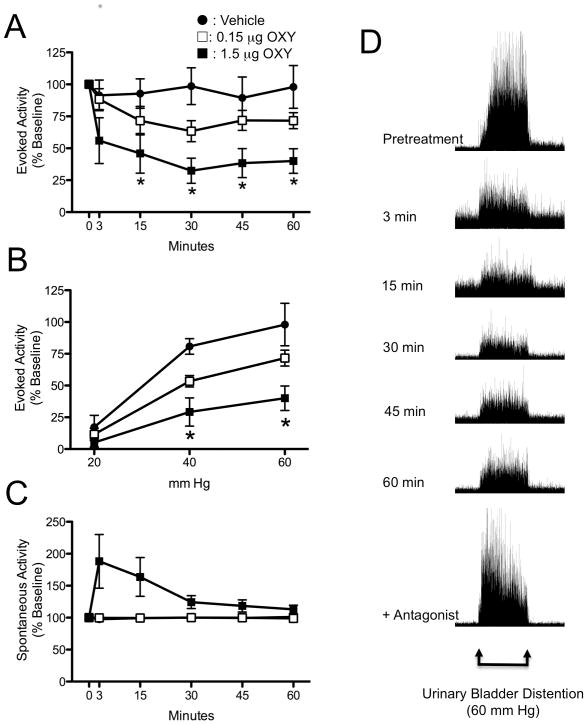Figure 1.
Effect of intrathecally (i.th.)-administered oxytocin (OXY) on visceromotor reflex (VMR) to urinary bladder distention (UBD). Evoked activity is expressed as percent of EMG response to 60 mm Hg, 20s UBD prior to delivery of i.th. OXY. A: Time course for the effect of OXY on evoked VMR activity to UBD at 60 mm Hg. * P < 0.05 versus baseline value. B: Stimulus-response curves for the effect of OXY on VMR to graded UBD 60 minutes after i.th. OXY. * P < 0.05 versus vehicle control. C: Time course for the effect of OXY on spontaneous electromyographic (EMG) activity to UBD at 60 mm Hg. Spontaneous activity was determined during the 10 s prior to UBD, and is expressed as percent of baseline prior to delivery of i.th. OXY. Spontaneous activity vehicle data is obscured by the 0.15 ug OXY data. N = 5-6 per group in all panels. D: Representative time course example of EMG activity to 60 mm Hg UBD at pre-treatment (baseline), 3, 15, 30, 45, and 60 min after i.th. oxytocin. The bottom figure is the EMG from the same rat when i.th. OXY antagonist was given after the 60-minute time point.

